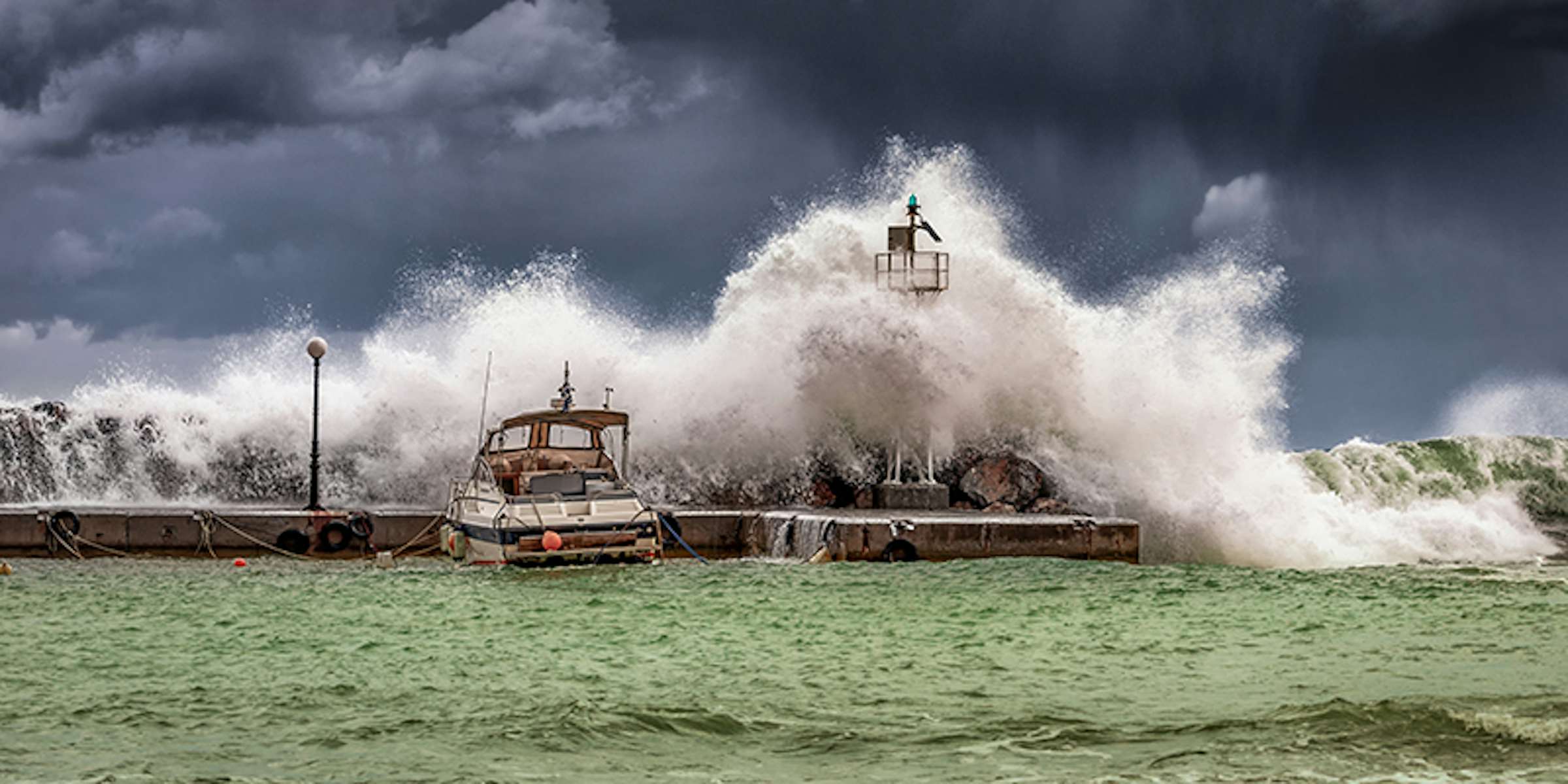
Keeping your boat safe during storms and bad weather
Over the past 10 years, Mariner has discovered the best ways to help you prepare your boat to survive a storm. Now that the tropics are beginning to get fired up, it’s a good time to make sure you are ready to protect your boat from storm damage both on the water and on land.
Clearly, the size of your vessel will play a major role in what you can and cannot do to protect your boat from a storm. Remember to pay attention to furled sails, they really need to be secured!
Here are several options to choose from if your boat must stay on the water:
DRY STACK: You can place your vessel in a dry stack, in a secure boat shed. If you are choosing to go this way, it is better to have an arrangement made in advance to get your boat secured safely before the storm arrives. Different operators have different policies with bungs. In or Out? If left in, your boat could fill up with water if it’s left outside in a stack. If left out, the boat could be relaunched and fill up with water if you don’t check it. If your bung stays in, don’t let your boat fill up with fresh water!
BERTH: A dock with strong pilings that offers reasonable shelter from water and storm surges is an ideal place to berth. Double all mooring lines, but remember to leave enough slack to allow rising water. Crossing spring lines should be equipped front and back and secured high on pilings. To prevent any chafing and breakage, all rough points should be wrapped with rubber hoses, rags, and tapes. You may also protect your boat from rubbing against the dock or other boats by installing additional fenders.
ANCHOR: If you are out at sea, and get caught, you may need to anchor. Choose a protected harbor or bay with a sandy or muddy bottom with a good anchor hold. You should also choose to use good ground tackle and a correctly sized anchor. Don’t go too small! It is also advised to get as much ground tackle as possible out, but be wary of swinging room.
MOORINGS: Ensure your mooring certification is up to date, check for chafe over the bow for rope components and check for corroded “O” rings and the like. Any lines or chain going over the bow should be positively retained. If not, you run the risk of your mooring gear causing problems as it comes into contact with other components on the bow if it jumps free in a swell or rough seas.
TRAILERED BOATS
Here are some simple tips for protecting your boat out of the water:
- Bring it inside! Your boat will be better protected from wind damage and flying objects if it is stored on its trailer inside your garage or shed.
- Secure your boat outside. If you must store your boat outside during a storm, be sure to remove any canvas you can.
- Trim those trees! Trim back large, dead, or dying trees and branches that could fall on your watercraft storage space in a strong storm.
- Watch out for rodents! Yes, rats and opossums can get into your boat and nibble away at squabs and electronics.
Regardless of where you will secure your boat during a storm, you should always remove all movable equipment and gear. If it cannot be removed, it needs to be secured to the boat. Anything that can come loose in a storm should be removed or secured. You can also seal windows, doors, and hatches with duct tape to enhance the watertight integrity of your boat.
With a bit of preparation, you can greatly increase the chances of your boat surviving bad weather and providing you with many more years of fun and enjoyment on the water.